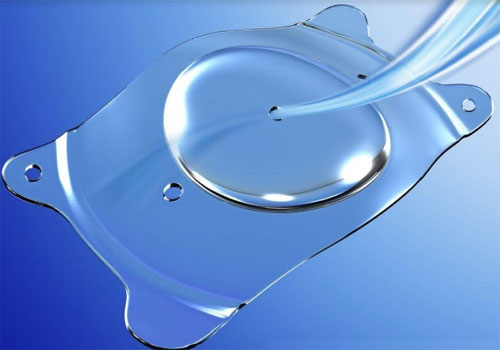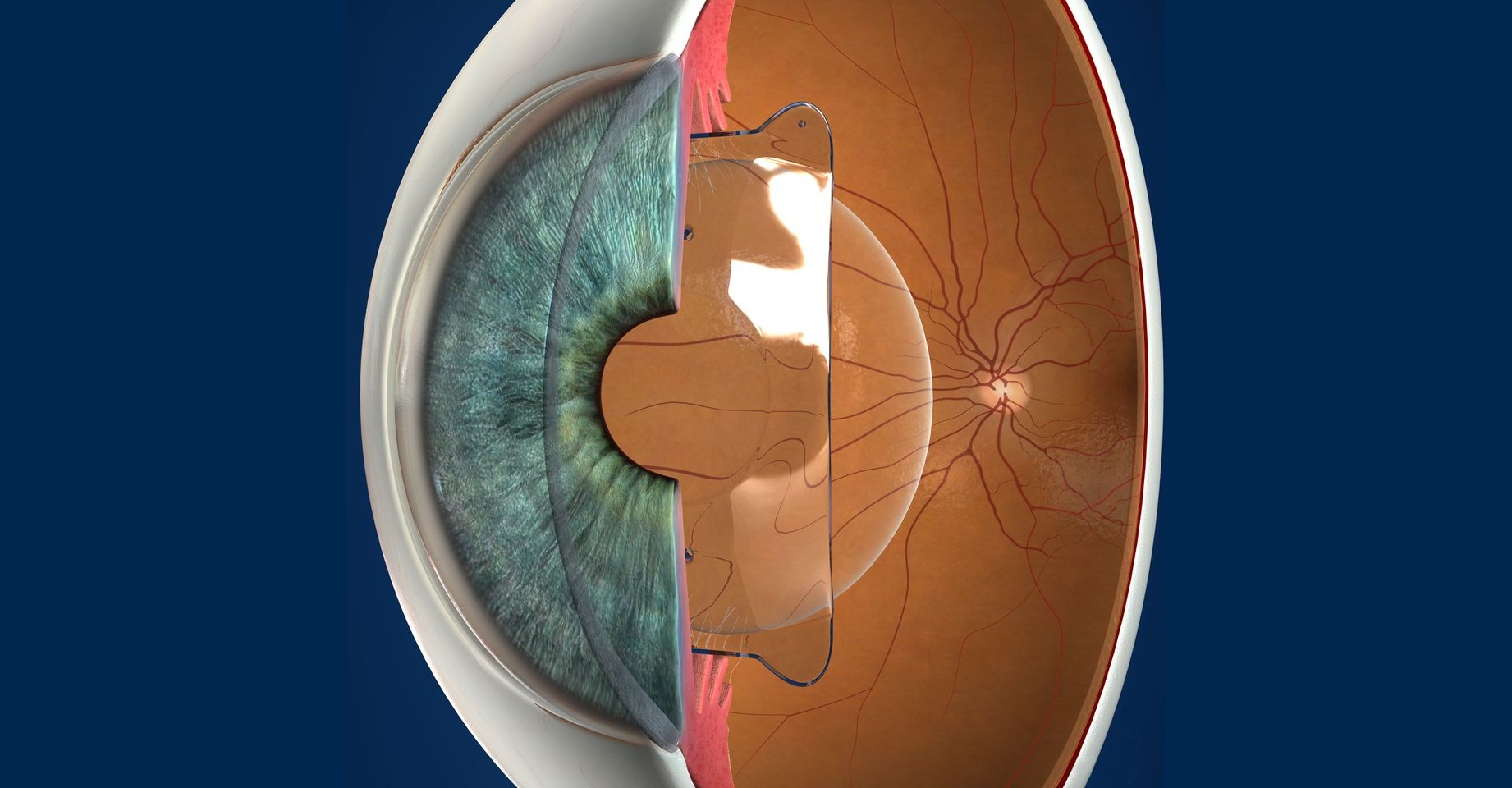ADVANTAGES AND COMMON PHENOMENA OF PHAKIC SURGERY
For patients with high nearsightedness or thin corneas but do not meet the conditions to perform laser surgery methods, Phakic is considered a safe and effective choice. This is advanced surgical technology, using an intraocular lens placed in the eye to restore maximum vision to the patient. With this special mechanism, Phakic surgery brings many outstanding advantages to patients, however, like any other surgery on the living body, this method also has certain limitations.

Intraocular lens used in Phakic surgery
What is Phakic surgery?
After nearly 20 years of creation and development, Phakic surgery has restored vision to millions of patients around the world. This is the optimal solution for groups with high nearsightedness/astigmatism and/or thin corneas, by placing an intraocular lens (ICL/IPCL) behind the iris and in front of the lens to restore vision. This lens is made from Collamer material, is thin, light, transparent, highly biocompatible with the human body, and can be flexibly removed when needed.
Advantages of Phakic surgery
Broad treatment spectrum
Phakic ICL surgery is capable of treating 18 degrees of nearsightedness, 10 degrees of farsightedness, and 6 degrees of astigmatism. Phakic IPCL surgery is capable of treating 30 degrees of nearsightedness, 15 degrees of farsightedness, and 10 degrees of astigmatism. This is an impressive number as the treatment threshold of the Phakic method is 2-3 times wider than other solutions, suitable for patients with high levels of nearsightedness and astigmatism that are outside the treatment spectrum of other methods. Lasers.
Does not affect corneal structure
Phakic surgery does not erode the cornea or change the structure of the eyeball, so it is suitable for patients with thin corneas who do not meet the requirements of laser surgery methods. At the same time, the patient preserves the visual nervous system, helps the tear secretion process occur normally, and prevents dry eyes after surgery.

Placing an intraocular lens in the eye does not affect the structure of the cornea
Full HD visual quality
Laser refractive surgeries will remove the parenchymal core (ReLEx SMILE) or surface laser irradiation (Femtosecond Lasik, SBK Lasik) - all have the same mechanism of thinning the cornea to eliminate refraction, thus affecting the cornea. affects the ability to see images in low light conditions. Meanwhile, Phakic surgery does not erode the cornea, so the patient's vision will be sharp even at night.
Combines UV protection
The ICL intraocular lens (STAAR Surgical - Switzerland) used in Phakic surgery has superior UV protection, helping patients minimize the risk of diseases caused by sunlight (macular degeneration). , cataracts, retinal damage, keratitis).
Some conditions of Phakic surgery and how to overcome them
Temporary increase in intraocular pressure
In rare cases, patients may experience temporary increased intraocular pressure, usually within 24 hours after surgery. This condition can be completely controlled with medication or a doctor's procedure.
Sensitive to light
After Phakic surgery, the eyes will be more sensitive to light sources. Patients may experience glare when looking at lights, seeing round halos in front of their eyes for a few seconds. This is a normal phenomenon, does not harm the eyes and the patient will get used to it after a while.
Infection
Phakic surgery will create a 2-3mm incision to insert the lens inside the eye. This incision does not require stitches and will heal on its own within a few days. During the eye recovery process, bacteria can enter through the surgical wound to cause infection. To ensure safety and prevent serious eye infections, patients need to take antibiotics and anti-inflammatory drugs as prescribed by an ophthalmologist.
Subconjunctival hemorrhage
After Phakic surgery, patients may experience subconjunctival hemorrhage, causing the whites to turn red. This phenomenon only appears temporarily and does not affect eye vision. Patients should not worry too much because this condition will gradually disappear after about 2 weeks to 1 month.
Difficulty seeing up close at first
Surgery will bring the eyes back to normal vision. It takes time to restore the natural accommodation ability, causing near-distance vision to not be clear and completely stable. To recover vision quickly, patients can increase eye exercises. This condition will gradually improve after 1-3 months depending on each person's condition.
Elimination reaction
When the intraocular lens is inserted into the eye, some patients' bodies may not accept the foreign object and cause a rejection reaction. This is an unpredictable case because it depends on each different situation. At that time, the doctor will use medicine or take the lens out if the medicine does not work. However, patients can rest assured because the rate of this complication is very rare, it's only 1/5000.
Phakic surgery at Japan International Eye Hospital
As the pioneering hospital in Phakic surgery in Vietnam, Japan International Eye Hospital is the leading facility in the number of Phakic surgeries in Vietnam, the number of Phakic ICLs in Southeast Asia and Australia. With medical services meeting Japanese standards, nearly 4,000 patients have trusted and chosen Phakic surgery at the hospital:
- Experienced surgeon: Dr. Vu Anh Tuan - Medical Director of the hospital is the person who directly performs Phakic surgeries. Dr. Tuan has nearly 30 years of experience and has successfully performed more than 22,000 refractive surgeries.
- Japanese standard surgical examination process: All examination and surgical steps are carried out methodically and closely according to Japanese standards. The "omotenashi" culture (putting yourself in the customer's shoes) is promoted at the hospital, demonstrated by comprehensive care services with 1:1 nursing companions on the day of surgery, and 12-month free eye check-ups. fees to ensure optimal vision results for patients.
- High quality intraocular lenses: The hospital provides Visian ICL lenses (Staar Surgical - Switzerland) and IPCL lenses (EyeOL - England). These are all high quality medical materials, highly compatible with the body, thin, light and transparent, with a lifespan equal to that of humans, helping to optimally treat refractive errors.
- The cost of Phakic surgery at the hospital is completely inclusive. With an investment of 90 - 100 million for 2 eyes, the patient is included in the fee for in-depth pre-operative examination, antibiotics/anti-inflammatory drugs, and post-operative goggles.
Any surgical method has its own advantages/disadvantages, however, the limitations of Phakic surgery can be controlled and overcome. Phakic nearsightedness is still an effective and safe option for many patients with refractive errors. To determine whether you are suitable for this type of surgery, perform an in-depth examination and receive specific advice from an ophthalmologist. Schedule a near-surgery examination at Japan International Eye Hospital (Free every Wednesday, Saturday, Sunday): https://jieh.vn/en/lasik-and-phakic-seminar.
